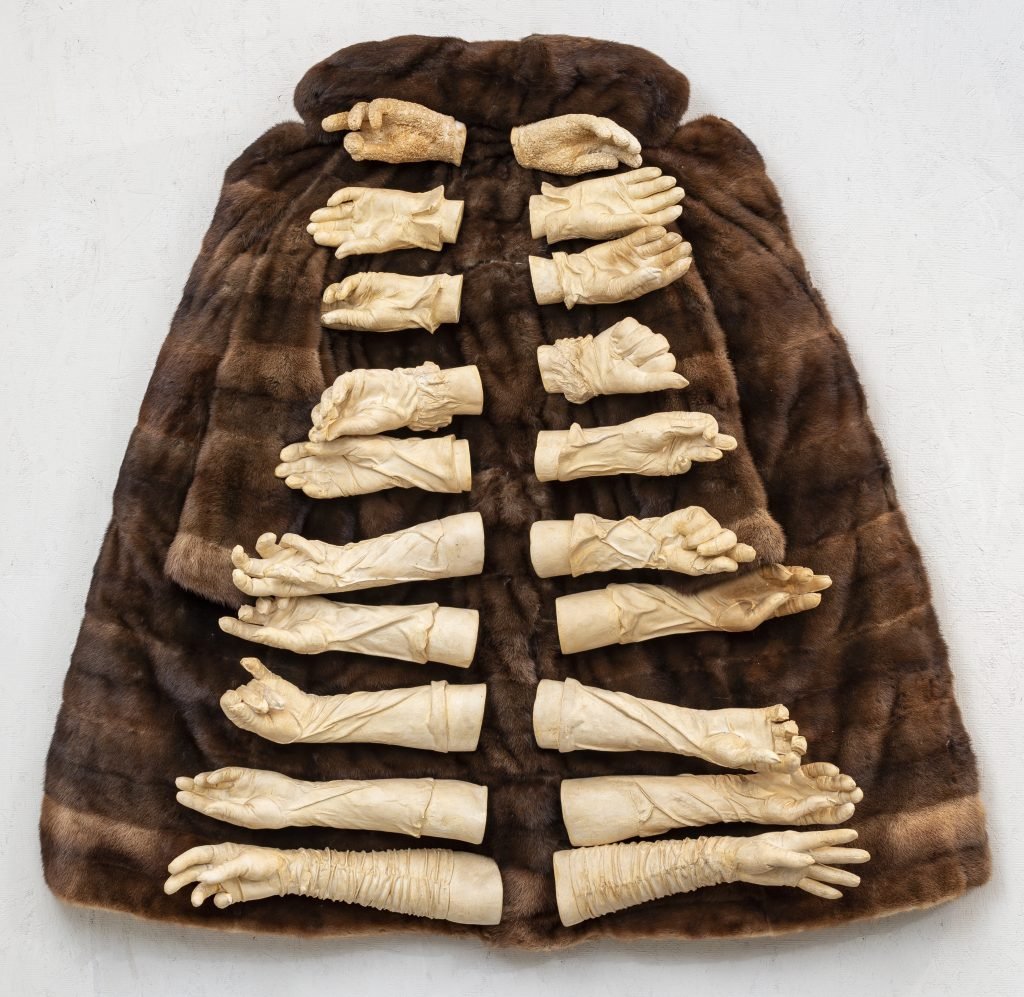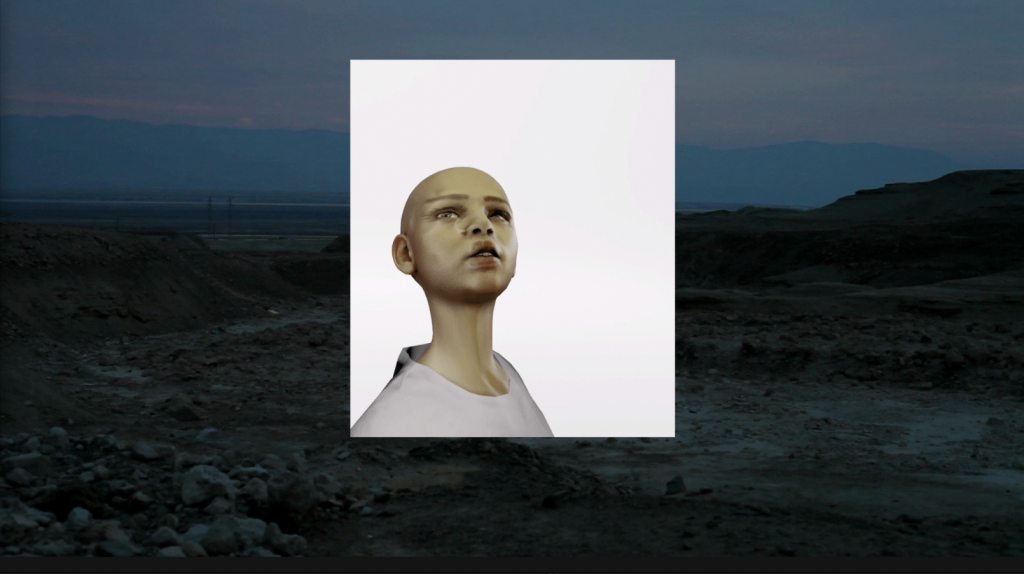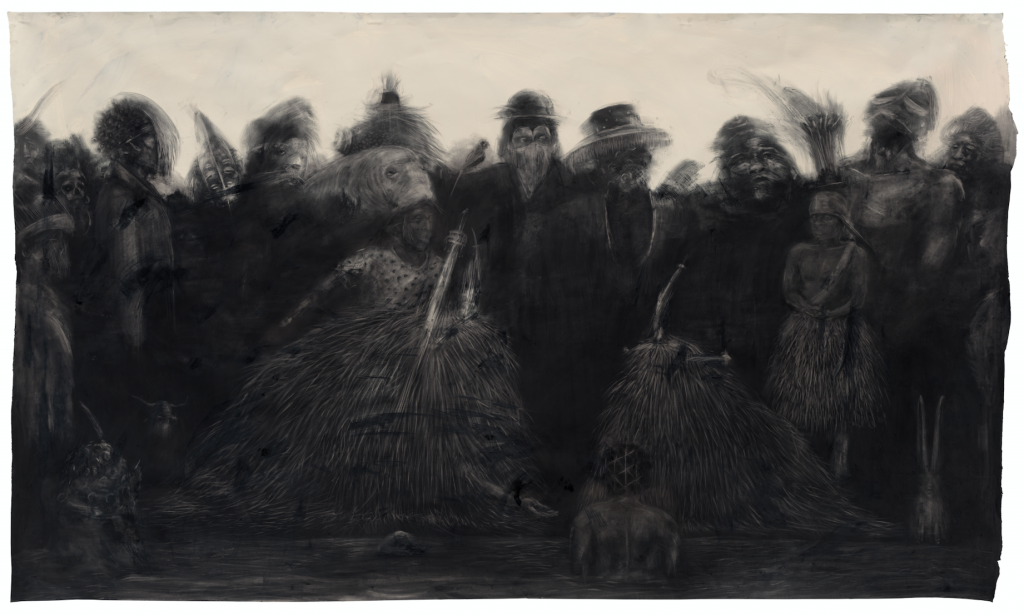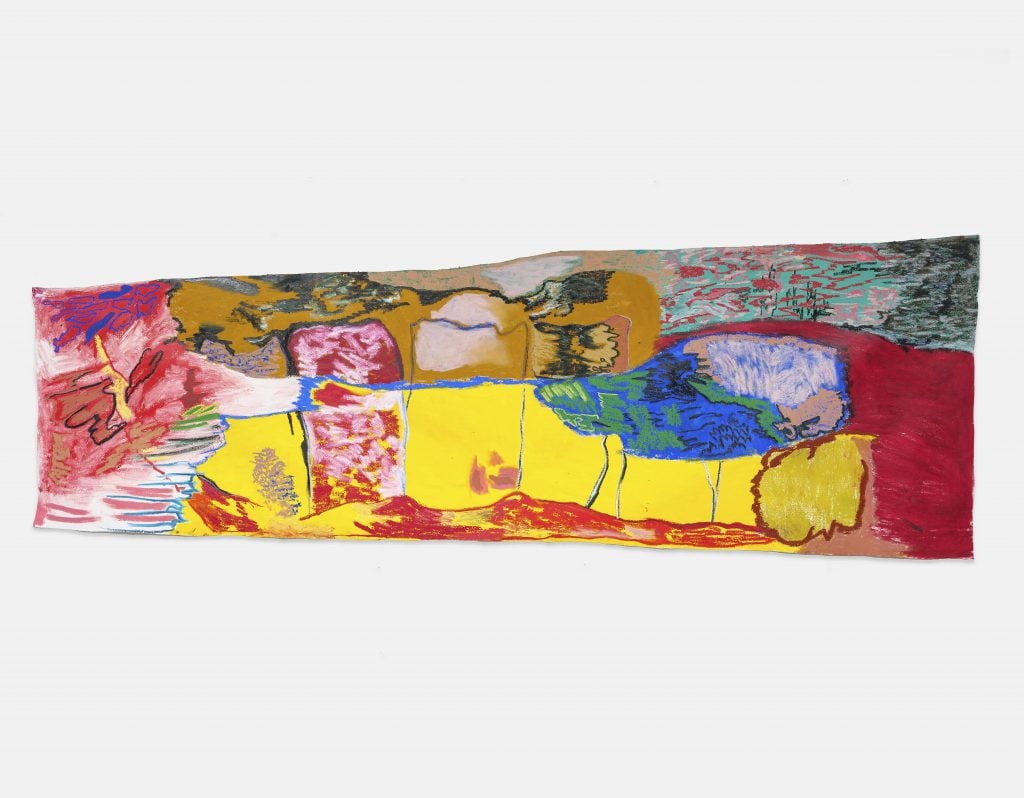5 Under-the-Radar Works to Seek Out at Frieze New York, From an Edward Said-Themed Dance to an Artist’s Poignant Memorial
No one would mistake even a top-tier art fair for an environment conducive to prolonged engagement with artworks of substance. But that doesn’t mean every exhibitor goes all in on flashy aesthetics, market-dominant stars, and outright gimmickry. In fact, almost every fair of consequence has a small stash of hidden gems that combine visual power with thematic gravity, and this year’s edition of Frieze New York is no exception.
Below are five memorable works worth searching out before the fair closes this Sunday.
Lawrence Abu Hamdan
Shot Twice (by the same bullet) (2021)
Sfeir-Semler Gallery, Beirut
Price: £15,000 ($18,750)
Lawrence Abu Hamdan, Shot Twice (by the same bullet) (2021). Courtesy of Sfeir-Semler Gallery, Beirut.
In this work, an acrylic lightbox displays two digitally printed photographs of the same Beirut street captured from the same angle roughly 30 years apart. The black-and-white image on the left features five armed men in civilian clothes taking cover behind a stack of sandbags, with a curved building under construction ahead of them. On the right is a color image in which the same street is lined with shiny contemporary sedans and SUVs, as pedestrians nonchalantly pass by the now-complete curved building and the glassy modern high rises that have sprung up behind it.
After a beat, the blurred silhouette of Lawrence Abu Hamdan appears on the lightbox to succinctly show and tell viewers about the changes the pictured site has undergone in the intervening decades. The “before” image was shot during the Lebanese civil war, which raged from 1975 to 1990. The photo comes from an extensive archive compiled by a young Lebanese historian named Bassel Abi Chahine, whose research has been aided by many veterans of the war who believe, as he does, that he is the reincarnation of a rebel who perished in the conflict.
Shot Twice (by the same bullet) is one of eight multimedia works that Abu Hamdan created in collaboration with Abi Chahine, who photographed the “after” images himself in 2019. For the historian, the project is a way to piece together a previous life only hinted at through occasional flashbacks and shards of memory. For Abu Hamdan, it is a way to unearth unresolved tensions that have been buried by Lebanese public officials in the name of capitalist progress, often to ill effect. To him, nothing signifies the problem more acutely than the conclusion of his narration here: that the Port of Beirut’s catastrophic chemical explosion on August 4, 2020, ensured that the street pictured in this work now looks more like it did during wartime than it did in 2019.
Marsha Pels
Écorché (2006–8)
Lubov, New York
Price: $25,000

Marsha Pels, Écorché (2006–08). Courtesy of Lubov, New York.
Marsha Pels’s sculptural installation is at once a daughter’s memorial, a partial self-portrait, and a treatise on coping with loss. After her mother died, Pels used the belongings left behind to make work about the gaping absence in her life. Écorché consists of patinated plaster casts of the artist’s own arms inside 10 pairs of her mother’s gloves, each affixed to her mother’s mink coat. An armature beneath the coat allows the composition to hang from the wall as if in a wardrobe, while the unseen support mechanism and the sculpture’s origin make its suspension in mid-air feel quasi-supernatural.
The title, a French academic term for any representation of a flayed human figure used for educational purposes, helps tease out the piece’s many thematic layers. On one level, it underscores the work’s bodily elements: the reproductions of Pels’s limbs arranged into a structure reminiscent of a rib cage, in a hue reminiscent of unbleached bone. On another level, it invokes the raw pain and vulnerability of losing a loved one, as well as the need to learn how to continue on without them.
Basel Abbas and Ruanne Abou-Rahme
At Those Terrifying Frontiers Where the Existence and Disappearance of People Fade Into Each Other (2019)
Proyectos Ultravioleta, Guatemala City
Price: $25,000

Basel Abbas and Ruanne Abou-Rahme, At Those Terrifying Frontiers Where the Existence and Disappearance of People Fade Into Each Other (2019). Courtesy of Proyectos Ultravioleta, Guatemala City.
At Those Terrifying Frontiers… is both a standout individual work and a primer on Basel Abbas and Ruanne Abou-Rahme’s collaborative practice. Together, the artists synthesize deep historical research with next-generation forays into technology, virtual worlds, and underground cultural production, with an eye toward how we live today—especially in opposition to how we are told to live by the forces in power.
The starting point for this 11-minute multimedia journey was After the Last Sky, a fusion of poetry, memoir, and sociology by Palestinian-American intellectual Edward Said. The duo transformed fragments of Said’s text into a disorienting electro song performed by multiple algorithmically generated avatars against footage of Said’s native land. Each avatar is a composite of the artists themselves and online images of participants in the March of the Return, a multi-day protest by Palestinians in the Gaza Strip in 2018–19.
Faced with the low resolution of the demonstration images, the algorithm compensated for the missing data by rendering the CG figures with an assortment of bodily scars, distortions, and absences. To the artists, these glitches express the often-invisible damage inflicted by occupation, by aesthetic representation, and by algorithms in an increasingly technocratic world order. But through their existence and their performance, the composite avatars also express humanity’s capacity to evolve, unite, and resist in even the most challenging conditions.
Sydney Cain
Remember to Cross the River (2021)
Jenkins Johnson Gallery, San Francisco/New York
Price: $26,000

Sydney Cain, Remember to Cross the River (2021). Courtesy of Jenkins Johnson Gallery, San Francisco and New York.
Despite its considerable dimensions (six feet by 10 feet), Remember to Cross the River manages to feel both commanding and meditative: large enough to lose yourself in, yet intimate enough to welcome extended contemplation. That’s a vital balancing act for a work that confronts death as a transition to be understood, not feared. Artist Sydney Cain even chooses their materials with this notion in mind. Here, charcoal and paper were once living trees; powdered iron oxide was formed through the interaction of air and solid metal.
The artist uses these transformation-derived media to render a scene that moves from ominousness to something like solace (assuming viewers allow themselves to sink into it). A crowd of spiritual beings—most of them humans wearing animal masks—waits on a riverbank for a lone figure approaching through the water. One of the spirits extends a hand to the traveler, welcoming them to the other side after enduring hardships that radiate through the image without having to be depicted.
Although the river has a particular resonance in African diasporic traditions as a place of healing, aid, and communion with one’s ancestors, Cain told Artnet News that it is also “a mythic space we’ve all emerged from,” whether our preferred narrative is folklore or Darwinian evolution. That may not mean that all of Remember to Cross the River’s reference points belongs to every viewer equally, but it does mean that the work can open everyone’s eyes somewhat if we meet it halfway.
Rachel Jones
Title TBC (2022)
Thaddaeus Ropac, London/Paris/Salzburg/Seoul
Price: £60,000 ($74,273)

Rachel Jones, Title TBC (2022). Photo: Eva Herzog. © Rachel Jones. Courtesy of Thaddaeus Ropac.
Rachel Jones, a highly sought-after, London-based talent who just turned 30 last year, provided Thaddaeus Ropac with this arresting new oilstick painting for her stateside fair debut. It’s the latest of the artist’s color-saturated renderings of abstracted teeth, which often seem to double as vibrant landscapes or still-life compositions. Conceptually, her works allude to the richness of Black interior life (see: the mouth as a portal to what exists inside), invoke jewel-encrusted grills as culturally complex status symbols, and remind us that a smile can be a response to a much wider range of conditions than just joy.
Right now, two of the only places where the public can see Jones’s work are her solo exhibition at London’s esteemed Chisenhale Gallery (through June 12), and at the Shed during Frieze New York. Her paintings have been nearly impossible to acquire since Ropac signed her following a fall 2020 group show at his gallery. The dealer placed her paintings in such institutions as the ICA Miami; the Museum of Fine Arts, Houston; and Tate even before opening her inaugural solo show at his London gallery this February. (No surprise, the show sold out almost instantly.)
It’s likely only a matter of time before Jones is the subject of a major institutional exhibition on this side of the Atlantic. But since there’s no telling when or where that might be, it’s all the more reason to get familiar with her engrossing, thoughtful, and evolving practice while you have the chance.
Follow Artnet News on Facebook:
Want to stay ahead of the art world? Subscribe to our newsletter to get the breaking news, eye-opening interviews, and incisive critical takes that drive the conversation forward.
Credit: Source link